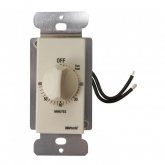JeepHammer
Solar Wizard
- Joined
- Nov 15, 2019
- Messages
- 1,149
Never thought of waste... now I can't stop thinking about it. I have 4 12v batteries wired in 24v system. Sorry haven't worked out the math
Not all production goes to 'Waste', some will be absorbed by equipment losses,
Losses are a fact of life and simply the price you pay for having electricity...
Instead of donkey power
When we 'Over Panel' for battery charging on not optimal sun days, we leave that power on the table once batteries are charged on full sun days,
When we throttle the power from panels through a charge controller with 30 Amp maximum,
Corvette power panels, Lawnmower power charge controller...
*IF* you have Corvette batteries that charge quickly, the Corvette power from panels on the roof are perfectly capable of making big power,
Some batteries are not capable of charging at high rates/quickly, and that makes a difference.
Simply trying to point out you CAN use that power with common components...
Batteries FIRST, and always.
Follow that one rule, then you can do what you want with something as simple as a timer.
Connected charge controller and appliances (Loads), like those connected wall outlets and power switchs, you could find out remotely when your batteries hit 100% SOC and you could turn on applainces remotly.
I'm NOT the connectivity type, so I couldn't stop a timer I set while at work when an unexpected/forcast storm or clouds popped up, that's where my battery reserve comes in, but batteries cost big money...
Someone tech savvy could get along with less battery with connected monitoring and control over load.
(Instead, they would spend money on a fancy phone & remote power controls, connected charge controllers, etc.)
Being NON-connected (read: Old Fart) and having been off grid for 20+ years, I use something like this for washing machine, etc.
Load the washer, set the switch to 'Auto' and let the washer work after the batteries *Normally* charge.
I have one in the kitchen to start crock pot dinner or something like that.

We have been so accustomed to living off grid, wall light switches look like this,
No lights/appliances left on by mistake.
This mechanical version doesn't suck any Watts like motion sensors or digital timers do.





